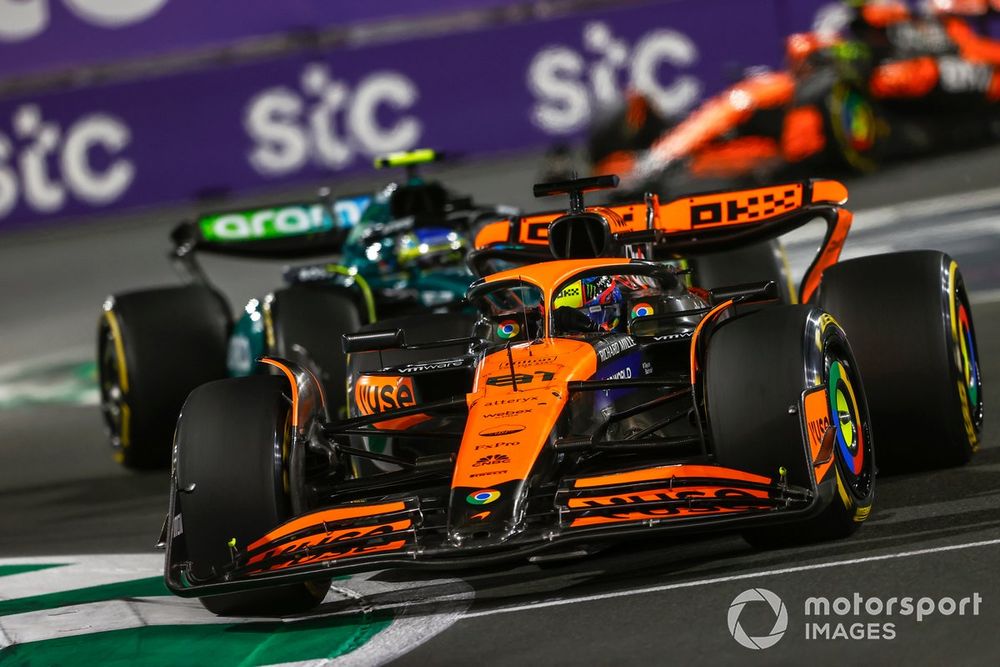The team then found it harder to keep up the development of its 2023 machine compared to the steeper curve its rivals were making, and slipped to fifth in the constructors’ standings.
That picture hasn’t changed much over the winter, with Aston Martin seemingly the fifth-fastest team in Bahrain and Saudi Arabia.
But what has been apparent is that this year’s AMR24 appears capable of going toe to toe with its direct rivals in qualifying, only to fall back in race trim, which is the opposite of last year’s picture.
“In Bahrain, we were definitely faster over one lap, comparing the long-run pace. There is a trend, it seems this year that we are struggling on the long runs, on the race pace,” said Alonso after qualifying for the Saudi Arabian Grand Prix.
Oscar Piastri, McLaren MCL38, Fernando Alonso, Aston Martin AMR24
Photo by: Andy Hone / Motorsport Images
Speaking before the Jeddah race, Aston’s performance director Tom McCullough said the team was still investigating why its balance between qualifying and race pace had shifted, but offered some clues which were later confirmed in the race.
“Historically we’ve tended to race strongly and found qualifying little bit harder. The characteristics of this car, it’s quite a different car for us aerodynamically,” McCullough replied when Autosport asked him about the discrepancy between short- and long-run competitiveness.
“We’re learning how to get the most out of it. We approached this weekend with the strategy of trying to improve the long runs and not really worrying too much about where we qualified, with very much the…
Click Here to Read the Full Original Article at Autosport.com – Formula 1 – Stories…

